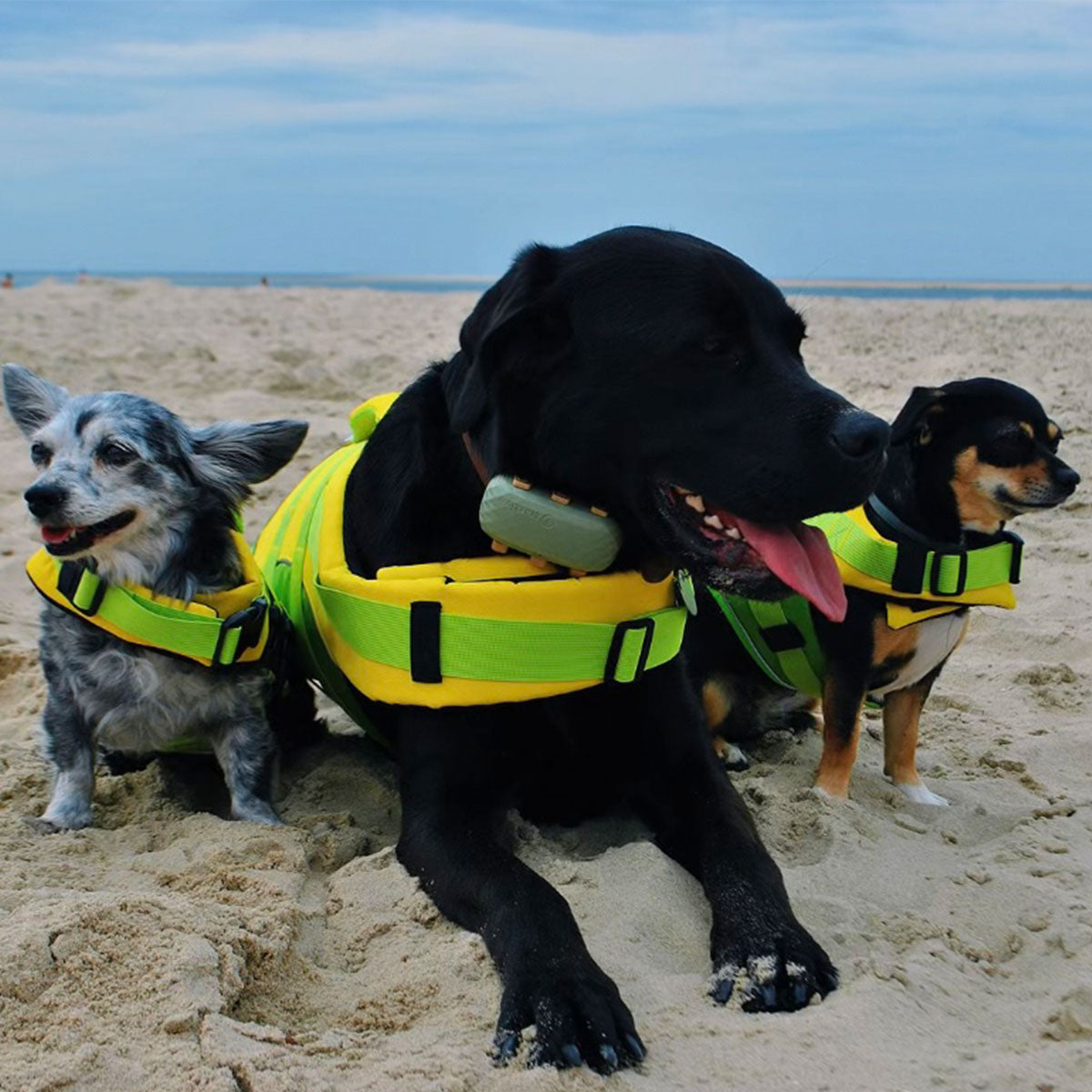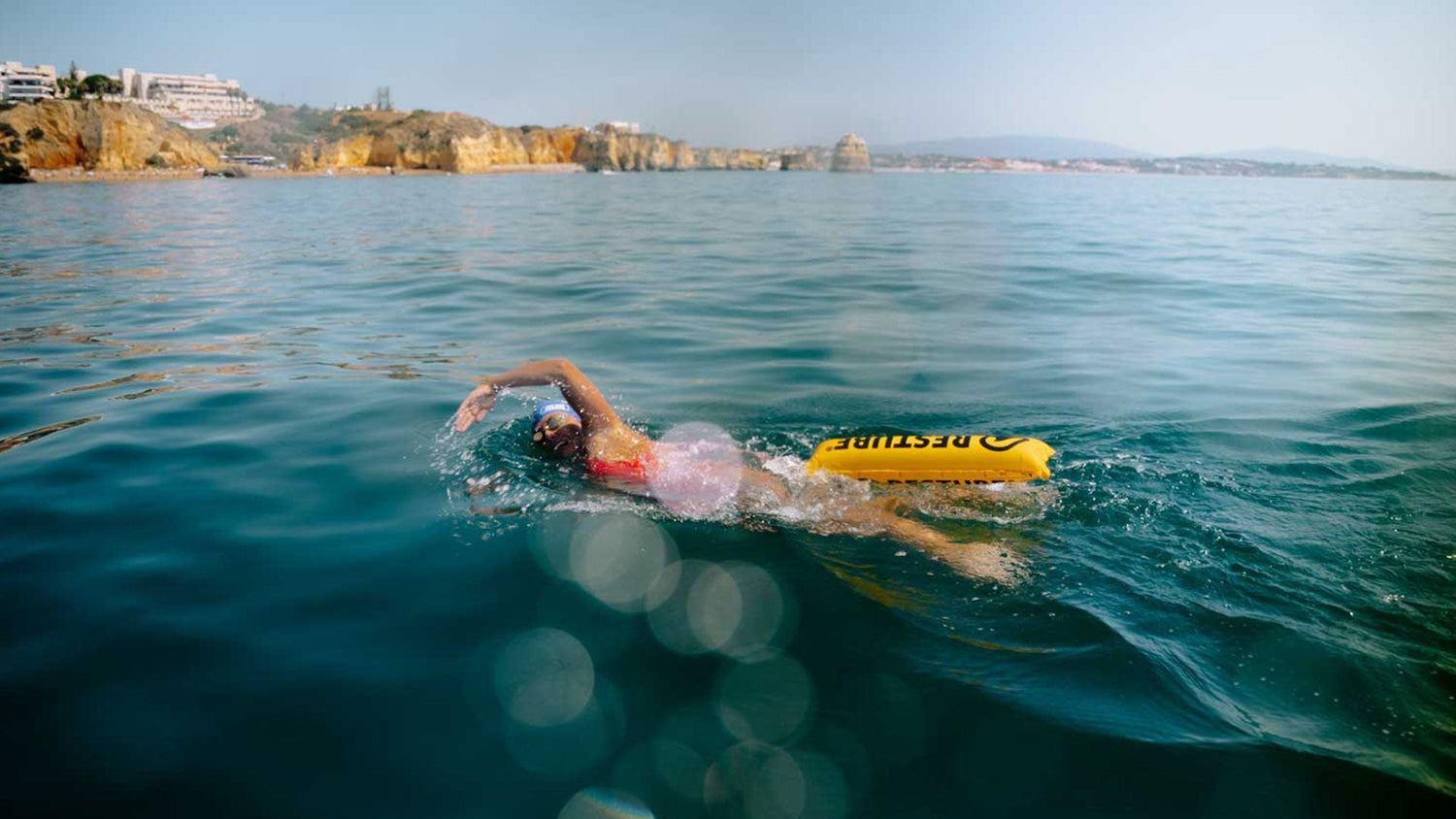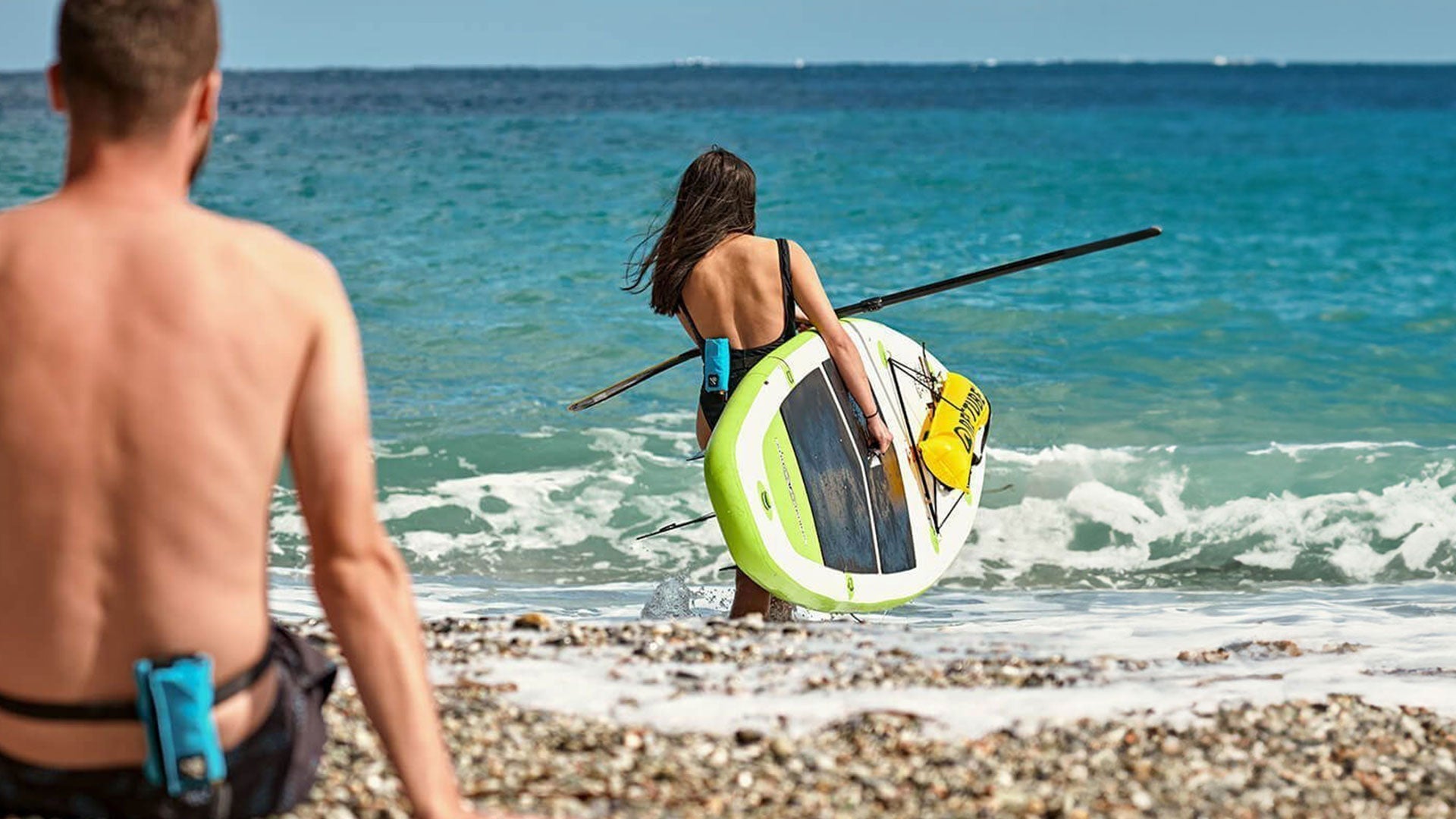Des badges de natation qui donnent du pouvoir - se sentir plus en sécurité, nager plus librement.
Savoir nager signifie sécurité, liberté et plaisir insouciant dans l'eau. Mais comment apprendre et améliorer la natation de manière structurée ? C'est là qu'interviennent les badges de natation allemands, qui vont de l'hippocampe au badge de sauveteur. Ils donnent des indications claires aux enfants comme aux adultes et motivent les gens à améliorer sans cesse leurs compétences en natation. Dans ce billet, tu apprendras tous les détails importants sur l'ordre des badges de natation, leurs exigences et comment RESTUBE peut t'aider à atteindre ton prochain objectif en toute sécurité.
Qu'est-ce que les badges de natation et pourquoi sont-ils importants ? .
Les badges de natation sont des preuves officielles de certaines compétences en natation et de connaissances en matière de sécurité qui sont normalisées en Allemagne. Ils t'aident à apprendre à nager de façon systématique et à développer progressivement tes capacités. Ils sont particulièrement motivants pour les enfants, car ils encouragent les améliorations ludiques de la technique et de l'endurance. Mais ces badges peuvent aussi servir de confirmation et de motivation précieuses pour les adultes. Outre l'aspect sportif, ils augmentent de manière significative ta sécurité globale dans l'eau. RESTUBE peut jouer un rôle crucial dans ce processus en offrant aux nageurs de tous niveaux une sécurité supplémentaire. En particulier lors des entraînements en eau libre ou sur de plus longues distances, RESTUBE offre le soutien nécessaire et aide les nageurs débutants et avancés sur le chemin de leur prochain badge de natation.
L'ordre des insignes de natation en Allemagne.
Pour apprendre à nager de manière ciblée, il existe une séquence définie de badges de natation. Chaque insigne s'appuie sur celui qui le précède et exige de plus en plus de techniques, d'endurance et de compétences en matière de sécurité. Du premier badge Seepferdchen jusqu'à l'exigeant badge Lifeguard, il existe des critères clairs pour chaque étape. Cette séquence permet une amélioration méthodique et durable de la natation. Ceux qui atteignent le niveau le plus élevé peuvent même se qualifier pour la formation de sauveteur.
Seahorses - The First Step to Safe Swimming
Pour de nombreux enfants, le badge Hippocampe (également connu sous le nom de Seepferdchen) est la première étape sur le chemin de la natation en toute sécurité. Il certifie les compétences de base, comme nager sur une courte distance et plonger pour attraper un objet. Pour obtenir ce badge, les enfants doivent nager au moins 25 mètres sans s'arrêter. Ils doivent également récupérer un objet dans l'eau jusqu'aux épaules et connaître les règles de base de la natation et de la baignade. Cet insigne constitue la base des insignes de natation suivants et rassure les parents sur le fait que leur enfant peut se déplacer librement dans l'eau. Cependant, le fait d'avoir obtenu l'insigne Seepferdchen ne signifie pas encore que l'enfant est un nageur parfaitement compétent. Il est donc essentiel qu'il s'entraîne en permanence.
Insigne de la natation allemande en bronze - Le premier grand jalon.
L'insigne de bronze de la natation, autrement appelé "Freischwimmer", développe les compétences fondamentales de la natation et améliore l'endurance. Pour obtenir cette distinction, il faut nager au moins 200 mètres en 15 minutes ou moins. En outre, une personne est testée pour plonger à la recherche d'un objet dans au moins deux mètres d'eau. Le saut dans l'eau et les connaissances théoriques sur les règles de baignade font également partie de l'examen. L'obtention de ce badge montre que tu peux déjà mouvoir avec confiance dans l'eau. Mais encore une fois, une pratique régulière est la clé d'une sécurité durable. Les environnements en eau libre, en particulier, peuvent poser des défis différents de ceux d'une piscine.
Insigne allemand de natation en argent - Plus de sécurité dans l'eau.
Avec l'insigne de natation argent, les techniques de natation et les aspects liés à la sécurité sont davantage développés. Les exigences comprennent la natation de 400 mètres en un maximum de 25 minutes. Des plongées plus avancées dans des eaux plus profondes pour récupérer plusieurs objets font également partie du programme. Une partie importante du test consiste à sauter d'une hauteur d'au moins trois mètres. En outre, les participants doivent démontrer qu'ils connaissent les mesures de premiers secours liées à l'eau. Ces exigences accrues favorisent un comportement sûr dans une grande variété d'environnements aquatiques et constituent une excellente préparation à des tâches de natation et de sauvetage plus exigeantes.
Insigne allemand de natation en or - La classe de maître de la natation.
L'insigne de natation d'or est le niveau le plus élevé parmi les insignes de natation récréative en Allemagne. Ici, il faut nager 1 000 mètres en 24 minutes, ce qui demande une excellente endurance. En outre, on sera testé sur divers plongeons et sauts à partir de différentes hauteurs. De multiples exercices de plongée te préparent à d'éventuelles situations d'urgence. La partie théorique comprend la connaissance des règles de baignade et de l'autosauvetage. Toute personne titulaire de cet insigne est un nageur très compétent et peut se débrouiller dans presque tous les plans d'eau. C'est aussi une base solide pour le cours de sauveteur.
Insigne de sauveteur - Formation spécialisée en sauvetage aquatique
L'insigne de sauveteur s'adresse aux nageurs avancés qui veulent assurer la sécurité des autres. Il couvre les techniques de sauvetage spécialisées pour aider les gens dans des situations dangereuses qui peuvent se produire dans l'eau. Les pratiques comprennent l'élargissement des performances de natation et de plongée ainsi que des prises de sauvetage spécifiques et des techniques de transport. Un cours complet de premiers secours fait également partie de la formation. Cet insigne est souvent utilisé par les sauveteurs professionnels, les surveillants de piscine et d'autres services de sauvetage aquatique. Il constitue une excellente qualification pour toute personne souhaitant travailler professionnellement dans le domaine de la sécurité aquatique ou en tant que sauveteur bénévole. Ce badge apporte cependant des avantages majeurs pour la vie de tous les jours, car la connaissance des techniques de sauvetage peut sauver des vies dans de nombreuses situations différentes.
Insigne de Skull - Mythe ou réalité?.
Contrairement aux quatre insignes décrits précédemment, l'insigne dit du crâne ou "Totenkopf-Abzeichen" n'est pas un insigne de natation officiel en Allemagne. Il s'agit plutôt d'un terme informel désignant des défis de natation particulièrement extrêmes. Certains clubs de natation ou groupes privés peuvent organiser un examen interne sous ce nom, mais il n'existe pas de certification de ce type reconnue par le gouvernement allemand. Souvent, le symbole de la tête de mort représente des exploits de natation extraordinaires dans des conditions difficiles. Certains nageurs l'utilisent comme une motivation personnelle pour repousser leurs limites. Il est tout de même important de se rappeler qu'un entraînement solide et la séquence officielle des badges de natation constituent la meilleure base pour nager en toute sécurité. RESTUBE peut également fournir un soutien crucial en matière de sécurité dans les défis de natation extrêmes, en offrant une protection supplémentaire.
Les badges de natation ont-ils été interdits en Allemagne ? .
Ces dernières années, des discussions permanentes ont eu lieu sur les changements à apporter à l'enseignement de la natation, mais les insignes de natation eux-mêmes n'ont pas été interdits. Au contraire, certains critères de test ont été mis à jour pour être plus pratiques et plus axés sur la sécurité. En particulier, l'ancien insigne Freischwimmer a été intégré à l'insigne de bronze allemand de la natation. Ces ajustements visent à améliorer durablement les compétences en natation et la sécurité aquatique. Cependant, il est important de se tenir informé des nouvelles exigences afin de s'entraîner efficacement. RESTUBE peut être un complément utile à cet égard, en offrant une sécurité supplémentaire pendant l'entraînement. Ainsi, tu pourras répondre aux nouvelles normes avec plus de confiance et de plaisir.
Comment RESTUBE peut t'aider sur le chemin des badges de natation ? .
RESTUBE offre une sécurité supplémentaire à tous ceux qui s'entraînent pour obtenir leur badge de natation en eau libre ou dans des conditions difficiles. En particulier lors de la préparation de l'insigne d'or ou de sauveteur, les produits RESTUBE peuvent être un atout précieux. Ils offrent une sécurité supplémentaire pendant les nages de longue durée et dans des conditions difficiles. C'est aussi particulièrement utile pour les adultes qui apprennent à nager plus tard dans la vie, car cela peut renforcer la confiance en soi. Lors des entraînements en eau libre, RESTUBE sert de solution de sécurité pratique. Tu peux te concentrer sur ton entraînement sans t'inquiéter d'un épuisement soudain ou de crampes. RESTUBE t'aide à atteindre tes objectifs avec un maximum de sécurité !




